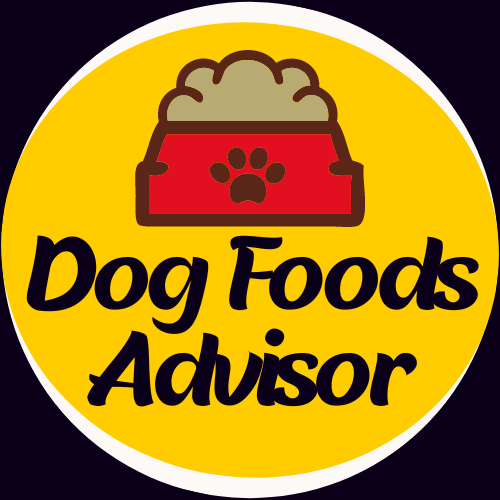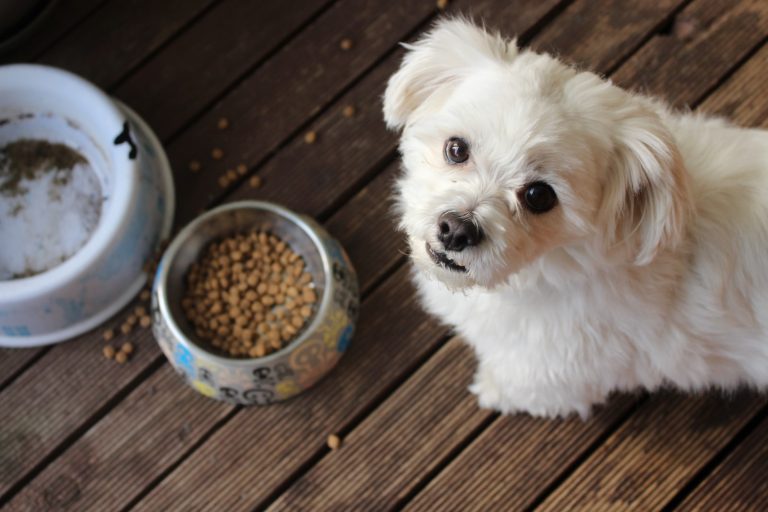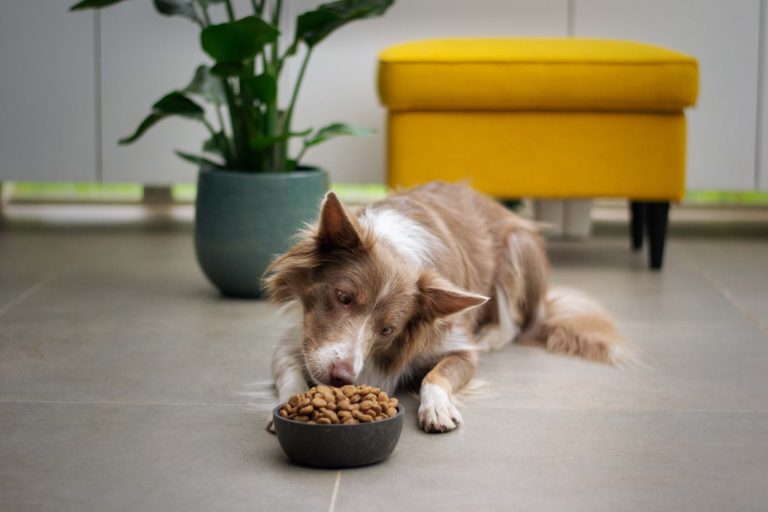Reasons why grain-free dog food is popular
Are you wondering why more and more pet owners are making the switch to grain-free dog food? While traditional kibble is still a popular choice, there has been an increase in demand for alternative diets that cater specifically to our furry friends’ needs.
From better digestive health to improved coat condition, we delve into the reasons behind this trend and uncover why it might be worth considering for your own fur baby. So buckle up, grab a treat (or two!), and let’s dig deeper into understanding the reasons why grain-free dog food is taking the industry by storm.
Why grain-free diets are popular for dogs
One of the more popular trends in pet food these days is going grain free. Grain-free means that there is no grain in the food. Grain is a type of carbohydrate and many veterinarians believe it can be a major contributor to health problems such as obesity and diabetes in dogs. So why are grain-free diets so popular?
There are a few reasons that grain-free diets are so popular with dog owners. The first reason is that dogs have evolved to eat a lot of carbs, especially when they’re hunting or scavenging for food. Without grains, most meat-based snacks that are marketed specifically for dogs provide adequate energy needs. And because grains are inflammatory, some people feel better switching their dog over to a grain-free diet to help control inflammation in their pooch’s body.
Another big reason why many people choose to feed their dog on a grain-free diet is because grains can be inflammatory themselves. When we consume Grains, our body breaks them down into simple sugars called glucose which then enters our bloodstream quickly where it’s used for energy by the cells throughout the body.
But too much sugar consumption over time can cause problems like obesity and Type 2 diabetes in both humans and dogs alike. There’s argument about whether grains really worsen those conditions or not, but one thing is for sure: feeding your dog something other than grains will probably improve their overall health!
Types of grain-free dog food
There are many types of grain-free dog foods on the market, and each has its own set of benefits and drawbacks. Some people prefer grain-free diets because they believe that it is healthier for their dogs, while others simply enjoy the convenience factor. Regardless of the reason you’re choosing a grain-free diet for your dog, be sure to research each option carefully before making a decision.
The most popular type of grain-free food is made without rice, corn, wheat, or other grains. This type of food is often referred to as a “puzzle food” because it contains pieces small enough for dogs to fully chew and digest.
These foods are typically high in protein and low in fat, which makes them ideal for maintenance diets or those with allergies to certain types of fats. Many companies also make Grain Free Pouched Dog Food which comes in wet pouches that you can add water to before serving.
One disadvantage of grain-free dog food is that it’s difficult to find brands that contain every type of food necessary for a complete diet. Many companies only offer a single type of food (sometimes called Variety Pack), which can be limiting if you have multiple dogs who need different types of food.
Additionally, some people report that their dogs have difficulty digesting these types of diets due to their higher levels of protein. If you decide to switch your dog to Grain Free Dog Food be sure to start slowly by adding just small amounts and monitor your dog’s progress closely.
Another type of grain-free food is made with meat as the main source of protein. These diets are typically high in fat and lower in protein, making them better suited for aggressive or large dogs who need more than just a diet of vegetables and meat can offer. Some popular brands that make this type of food include Canine Caviar, Well-bred Nutritional Solutions, and Blue Buffalo.
One advantage of these types of diets is that they tend to be more affordable than those made without grains. Plus, many people find that their dogs have easier time digesting meat-based diets since they are not as limited in their animal sources.
However, these diets can also be more difficult to transition your dog to since most contain a high amount of fat. Be sure to start slowly by mixing small amounts of food with water before increasing the amount gradually over time.
Comparison of grain-free and kibble diets
One of the most popular dog food diets is grain free. Grain free dog food is made without any grains, including wheat, corn, and soy. Grain free dog food is believed to be healthier for dogs because they don’t get the added sugar and processed grains that can cause health problems in other animals.
There are several reasons why grain free dog food is so popular. Dogs have a natural love of meat, so it makes sense that people would choose a diet that mimics their natural eating habits. Grain free diets have also been shown to be more nutritious than traditional diets.
Dogs get all of the essential nutrients they need from a grain free diet, but without all the added sugars and processed foods that can cause health problems in other animals.
While grain free dog food is definitely more expensive than kibble-based diets, it may be worth it for some dogs. If your pet has any digestive issues or you are concerned about their overall health, a grain free diet may be the best choice for them.
Benefits and Drawbacks of Grain Free Dog Food
Grain-free dog food is becoming increasingly popular, as many pet owners are looking for a healthier option for their dogs. However, grain-free diets can also have some significant drawbacks that you should be aware of before making this choice for your pet. Here are the pros and cons of grain-free dog food:
Benefits of Grain-Free Dog Food
If you’re concerned about the health implications of feeding your dog processed foods, grain-free diets may be a good choice. These diets are lower in sugar and processed ingredients, which can provide some relief for dogs with health problems like diabetes or allergies.
Additionally, grain-free foods typically have more protein and healthy fats than regular kibble, which can improve your dog’s coat and overall health.
Some people believe that grain-free diets are better for dogs than traditional kibble because they contain more nutrients and less filler. However, if you’re looking for a balanced diet that provides adequate amounts of vitamins and minerals, a grain-free diet may not be the best option for your pet.
Additionally, grains are high in salt, so some brands of grain free food contain more sodium than regular kibble. If you’re concerned about the level of salt in your dog’s diet, you may want to consider selecting a lower-salt option.
Drawbacks of Grain Free Dog Food
While there are many benefits to feeding your dog a grain-free diet, there are also several drawbacks to consider before making this choice for your pet. First, most grains contain high levels of carbohydrates, which can spike blood sugar levels in dogs and lead to health problems like obesity and diabetes.
Grains also contain estrogen-like compounds that can disrupt hormone function in dogs and cause problems such as uterine bleeding and reproductive issues. In addition, grains are high in salt and other unhealthy additives that can damage your dog’s internal organs.
While grain-free foods are popular among many pet owners because they believe they’re good for their dogs, there are also a few downsides to consider.
- First, most grain free foods aren’t balanced and provide inadequate amounts of key nutrients like protein and healthy fat.
- Second, these diets can be expensive if you have to purchase them specifically designed for pets.
- Finally, since these foods aren’t typically fortified with vitamins or minerals like commercial kibble products, your dog may struggle to meet all his or her nutritional needs.
Guidelines for feeding a grain free dog
grain-free dog food is increasingly popular because it is believed to be healthier for your dog. Grain-free diets are low in carbohydrates and the majority of nutrients come from meat, poultry, eggs, and plants. However, many grain-free diets are also high in unhealthy fats. It is important to find a good grain-free food that meets all of your dog’s nutritional needs.
Here are some guidelines for feeding a grain free dog:
A good grain free Dog Food should have at least 26% protein content and 8% fat content. Protein will help keep your dog feeling full and provide essential nutrients such as bone formation, muscle development and coat flourish; while fat helps to keep your pet’s skin healthy and their hair glossy.
Remember to always consult with your veterinarian before switching to a grain free diet as there may be other factors at play that affect their health such as allergies or diabetes which cannot simply be resolved with feeding a higher protein or lower carbohydrate diet.
Some brands that claim to adhere closely to these guidelines include Orijen Complete & Wellness Dog Food, Science Diet Performance Canned Dog Food (both 22% protein) and Wellness Core dry foods (both 18%). If you’re looking for an all-inclusive list of brand recommendations tailored specifically towards grain free diets then our helpful tips can point you in the right direction!
Conclusion
Grain-free dog food is one of the most popular diets in the pet industry, and for good reason. Not only are grain-free dogs healthier than their counterparts who consume regular kibble, but they also tend to be more active. Reasons for this include the absence of grains which can cause canine diabetes, digestive problems and even obesity in some cases. If you’re thinking about switching your dog to a grain-free diet, here are four things you need to know first.





